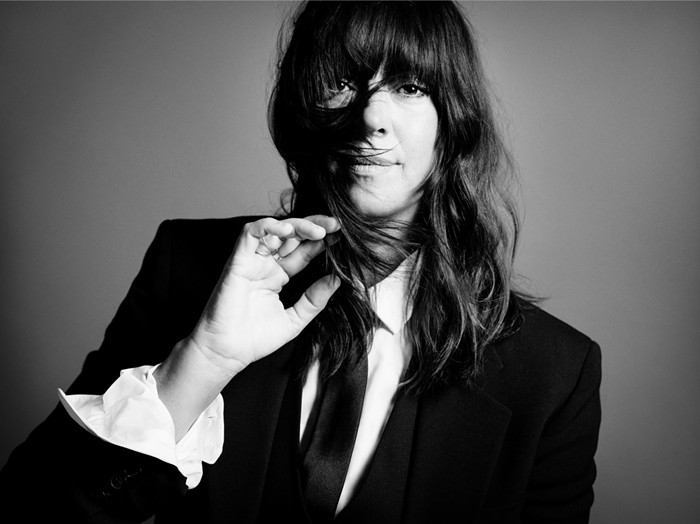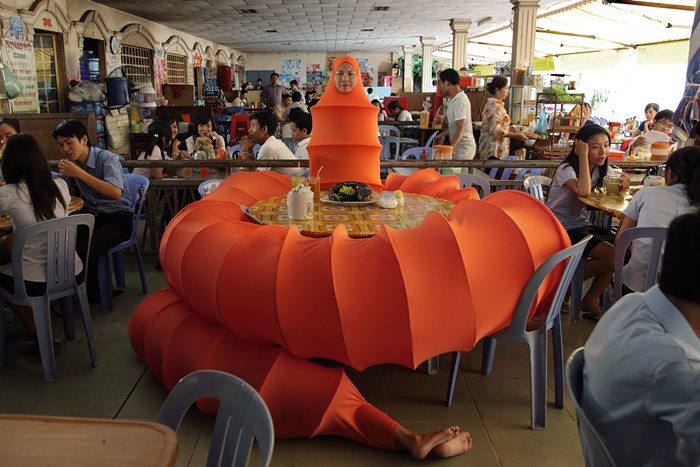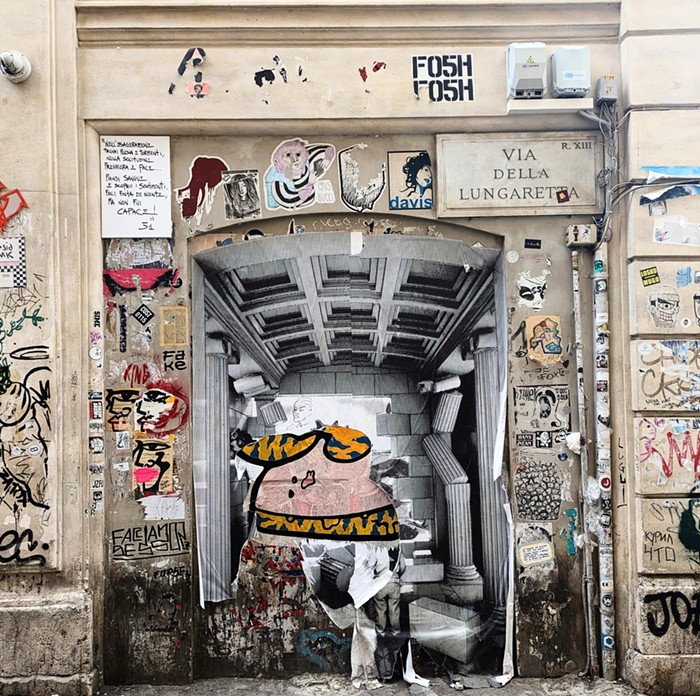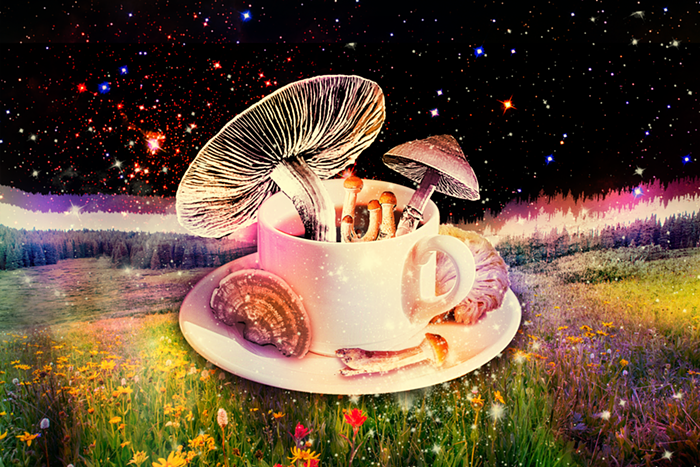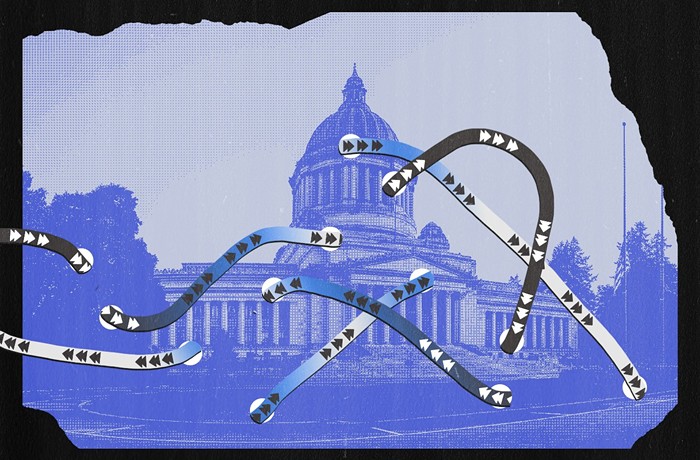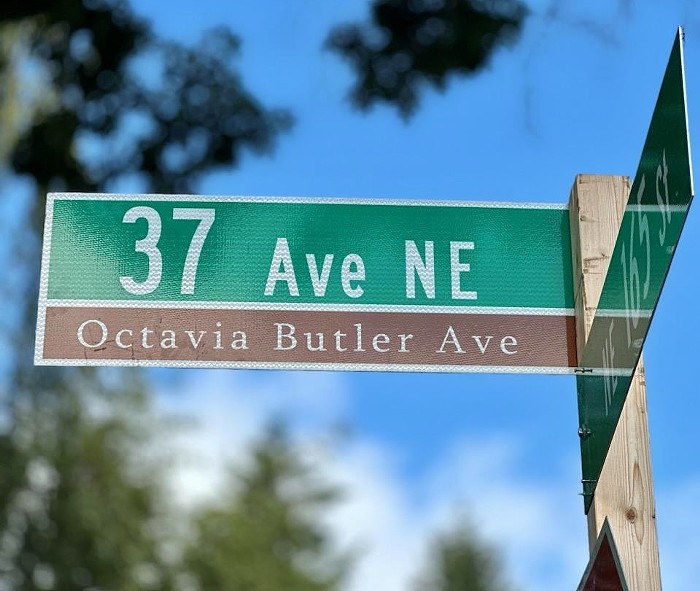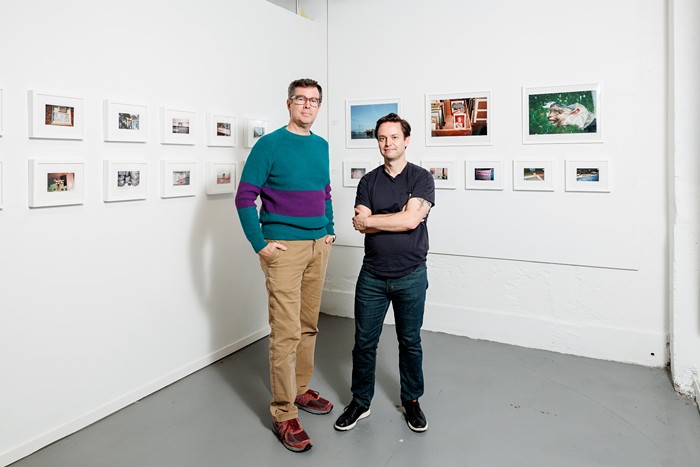The painting, from 2008, is called Yellow Terror. It is covered—covered—in Japs. Bloodthirsty Japs laughing maniacally, slanting their slanty eyes all the way closed, with fangs on their buckteeth. Waving, slaphappy kamikaze Japs in cockpits. Japs with elephant ears for spying. As wily snakes. Rats in traps. Dogs wearing the epaulets of generals, pig rank-and-files, hairy-palmed apes. They form a vortex at the center of which is the face of the painter himself—Roger Shimomura, familiar from his many other self-portraits—pulling his eyes up into slants with his index fingers (which, even when you deduce they're index fingers, still read as middle fingers), biting his bottom lip to form buckteeth, and implying one unmistakable sarcastic sentiment: Ohhhhh. So solly.
Direct references for this painting are right next to it: World War II posters and postcards of the evil enemy in precisely these yellow-faced forms put out by the American propaganda machine, which included not only government agencies but also corporations (Seagram's, for instance) and such artists as one Dr. Seuss. In the painting, Shimomura inverts the bull's-eye, turning a target into a fuck-you surprise counterattack. But the original attack is also on display here in Shimomura's exhibition at the Wing Luke Asian Museum: a mass-produced WWII-era dartboard that reads "BOM JAP" offers 100 points (the highest reward, with others including 25 points for a kamikaze pilot) for nailing the bucktoothed, slanty-eyed bull's-eye. If that weren't enough, there's also a tidy display case containing Japanese hunting licenses, issued by barbershops and store owners and whoever wanted to do the issuing back in the days after Pearl Harbor.
This is to certify that _________ IS ENTITLED TO HUNT THE JAPANESE RAT, and is hereby warned to exercise extreme caution in approaching this savage beast: it is a vicious animal and strikes from behind without warning. This animal has the characteristics of a skunk in appearance and odor but has an appetite for women and children instead of small fowls... In shooting this stinkin skunk, aim at its stomach, since it has lots of GUTS, but no heart or brains.
Shimomura personally owns the hunting licenses, the dartboard, and the propaganda cartoons—or he did, until now. He bought them and hundreds of other insanely racist objects on eBay (the best search terms to use remain "Jap" and "Chinaman"—you may as well use both even if you only want Japanese-targeted racism, since telling the difference is so confusing for a genuine racist), and he's giving his collection to the Wing Luke, in his native Seattle, where he grew up in the Central District and then on Beacon Hill, and from where the three generations of his family (he was an infant, third-generation) were deported to an internment camp in Hunt, Idaho, from 1942 to 1944. (Shimomura—whose sister, Carolyn, died in the camp—has lived in Kansas most of his adult life, but he has shown continuously at Greg Kucera Gallery in Seattle for almost 25 years. His other main collection, of internment diaries and objects, will go to the Smithsonian National Museum of American History in Washington, D.C.)
Yellow Terror is the title of the 2008 painting and also the title of this exhibition, which pairs an inordinate number of paintings—there are 34—with Shimomura's collection of terrible objects. The clash is intense. A beautiful, glowing case has been fashioned for dozens of pairs of hateful Halloween masks dating back to the 1930s but also as recent as a few years ago, for instance. But back to Yellow Terror, because it encapsulates so much of how Shimomura puts his ideas at stake.
The way Kara Walker draws on the antebellum folk tradition of silhouettes, Shimomura rests his work on an Americanist bedrock: postwar painting. The painting Yellow Terror picks up precisely where the recent Seattle Art Museum megashow Target Practice—about the postwar attacks on painting—left off. The thick swarm of appropriated cartoon Japs resembles Jackson Pollock's "all-over" composition, heralded as the avant-garde breakthrough of its day, as well as Jasper Johns's response to that overheated style: his cold, dead-eyed Pop targets. Just as Johns pronounced Pollock DOA, so Shimomura injects poison into the veins of Pop. The forms of Roy Lichtenstein and Johns are Shimomura's source, but they have developed rigor mortis. It's the American ideal of equality, Shimomura's super-fun cartoony paintings remind you, that is dead on arrival for certain Americans.
But Shimomura's antiracist project has an added layer: He wants to reveal that Asian racism is a minority within minorities, that Asian stereotypes are still seen as more acceptable than, say, stereotypes about African Americans. He does a pretty convincing job of it—and this is how he implicates the contemporary viewer—in Yellow Terror. It's not just that Theodor Geisel (Dr. Seuss) drew a Jap ("Jap" being the very essence of and shorthand for this stereotype) back in 1940-whatever. That drawing became the centerpiece of a commemorative envelope less than 10 years ago after a book of Geisel's war drawings was released, and the envelope on display here bears an astounding 2004 postmark (it was sent from La Jolla, California).
Shimomura has continually taken aim, as seen in paintings and objects here, at the reinventions of the old, painful stereotypes: the early 2000s internet cartoon sensation Mr. Wong, a bucktoothed butler for a white woman; the 2002 line of hilarious fortune-cookie-laundry-service-etc.-etc. shirts by the fratty retailer Abercrombie & Fitch. (Shimomura has a deliciously vicious large vertical painting called Frat Rats that predates the A&F attitude—which basically boils down to God, why can't you Asians get a sense of humor?—but responds to the sentiment with perfect derision.) One of Shimomura's funniest paintings (not in this show) is his depiction of the xenophobic right-wing commentator Michelle Malkin, a Filipino American who wrote a book defending the U.S. decision to intern its own citizens, jabbering away from inside an internment barrack window. It's called Keep on Talkin', Michelle Malkin. Recently, Shimomura has begun work on a series of paintings of himself fighting everyone he has issues with—flying through the air like a kung-fu hero, for example, to kick Ann Coulter in the back of the head. He's calling it "Settling the Score."
Shimomura gets plenty of criticism for what he does. Older Asian Americans tell him to stop bringing it back up. Younger ones—his three kids, even—don't get the references. First-generation Asian immigrants wonder why he doesn't loosen up. It's a generational thing, he said, walking through Yellow Terror before it opened. He spoke of a recent dinner with Betye Saar, the older African-American artist who sees a world of difference between her 1970s works incorporating racist mammy dolls and Walker's racist silhouettes—and who hasn't hesitated to criticize the younger artist. Shimomura, who is soon giving a lecture at the University of Texas at the invitation of Michael Ray Charles, an African-American artist who uses Sambos and pickaninnies in his work, said he wishes he could get away with what Walker does. Is there anything he wouldn't paint, any place he would, like Saar, draw the line? "No," he says flatly.
In a phone conversation after the opening last week, Shimomura considered what his own children think of his work, then said he frankly doesn't know. His grandmother would be embarrassed, he says; his father and mother would check out the price tags and, seeing that the paintings are selling, would approve. But there is a late-in-the-day quality to Shimomura's project. "I feel like what I'm doing is stamping out flash fires left over from forest fires," he says, which captures it. Paradoxically, he's made art that he hopes will lose its power. The best he can hope for is that his paintings start to feel dated. They don't yet. ![]()

